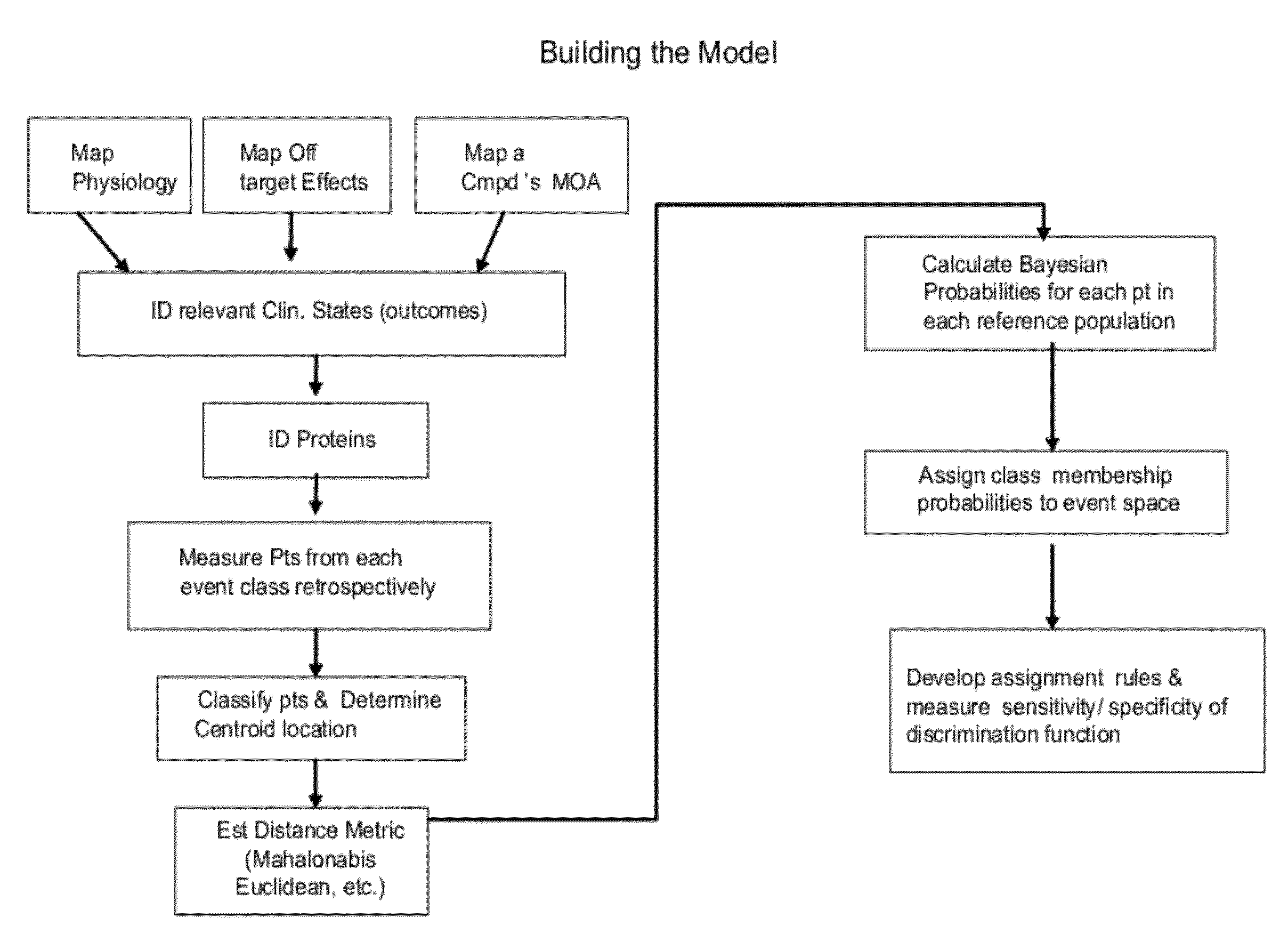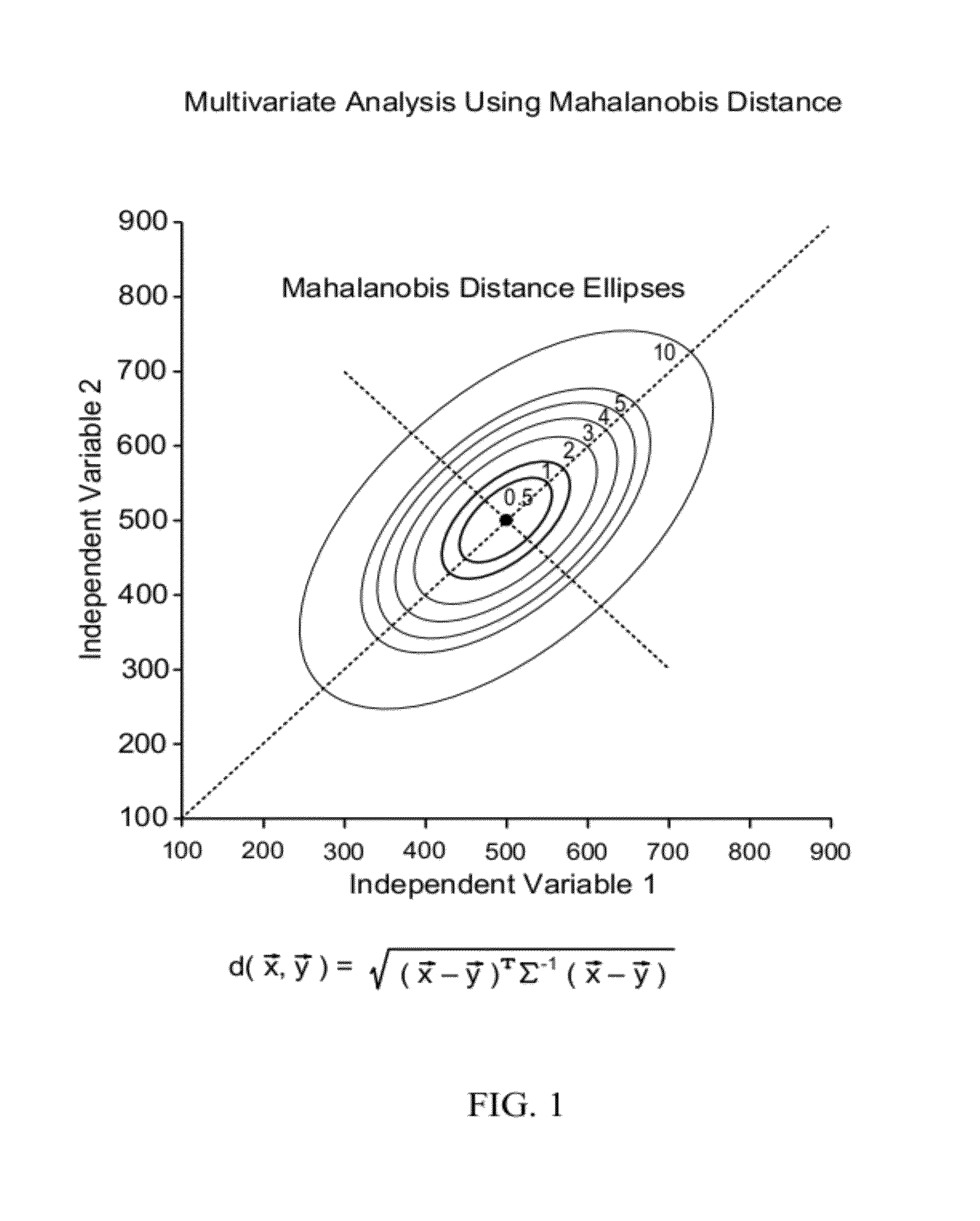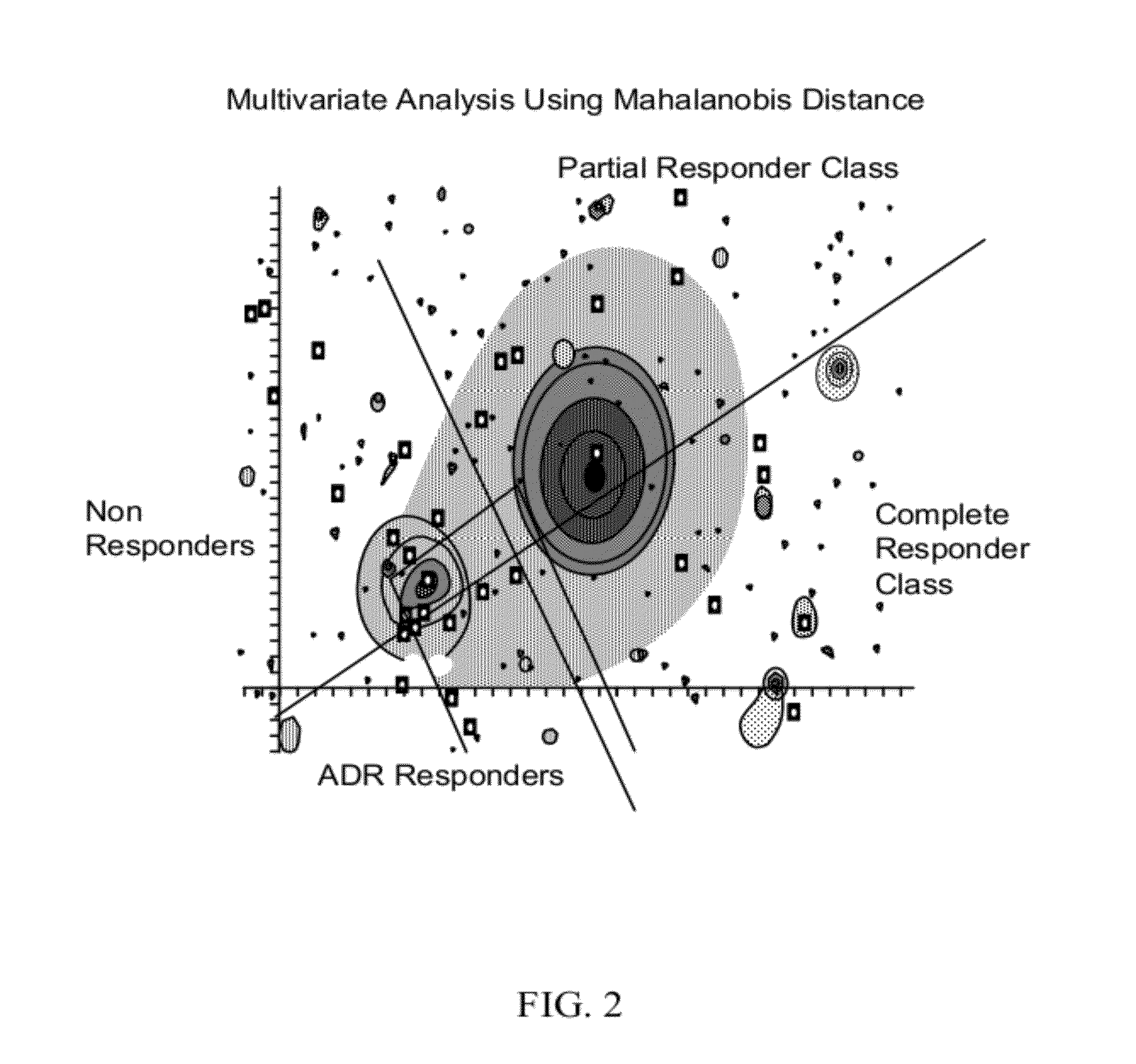Methods and Systems for Assessing Clinical Outcomes
a clinical outcome and system technology, applied in the field of methods for assessing a patient's clinical outcome, can solve the problems of reducing patient care, affecting patient care, and affecting patient care,
- Summary
- Abstract
- Description
- Claims
- Application Information
AI Technical Summary
Benefits of technology
Problems solved by technology
Method used
Image
Examples
example 1
Prostate Cancer and Anti-Angiogenesis Treatment
[0240]A Phase I or Phase IIa clinical trial for treating a subject diagnosed with prostate cancer with an anti-angiogenic drug allows for dose adjustments during the trial. The subject is monitored over a course of time during the clinical study. The method of action of the anti-angiogenic drug is to halt the growth of blood vessels in and around the tumor, thereby depriving the tumor of adequate blood supply. This may induce ischemia and nutritional necrosis in the tumor, thereby debulking the tumor.
[0241]After the method of action is determined, discrete clinical outcomes are chosen by medical personnel, such as a physician or clinical monitor. The discrete clinical outcomes chosen in this example are complete response (CR), partial response (PR), non-response (NR), and adverse drug reaction (ADR). The ADR related to the anti-angiogenic drug is hypertensive encephalopathy in this example.
[0242]Six biomarkers representative of the clin...
example 2
Sepsis and Anti-TNF Treatment
[0247]Subjects with confirmed or suspected sepsis or systemic inflammatory response syndrome (SIRS) are treated with an anti-TNF therapeutic during a Phase IIb (dose adjustment allowed) or a Phase III (no dose adjustment allowed) clinical trial. The subject is monitored over a course of time during the clinical study. The method of action of the anti-TNF drug is anti-inflammatory. The drug is aimed at preventing or circumscribing downstream sequellae of sepsis. Typically, the anti-TNF drug is given in conjunction with a broad spectrum antibiotic.
[0248]After the method of action is determined, discrete clinical outcomes are chosen by a physician. The discrete clinical outcomes chosen in this example are response (R), non-response (NR), and four sequellae (disseminated intravascular coagulation (DIC), acute respiratory distress syndrome (ARDS), acute liver failure (ALF), and acute renal failure (ARF))
[0249]Twenty biomarkers representative of the medical co...
example 3
Diabetes and Insulin Sensitization
[0255]Subjects with non-insulin-dependent Type 2 diabetes are treated with a commercially available insulin sensitizer and are monitored for efficacy and safety wherein the primary ADR of concern is congestive heart failure (CHF). The subject is monitored over a course of time during the clinical study. The method of action of the insulin sensitizer involves re-establishing insulin sensitivity in the subject via antagonism of a nuclear receptor in the adipose tissue and the liver. The insulin sensitizer and method of action act to increase glucose uptake in the peripheral tissues and thus reduce the circulating glycemia.
[0256]A subject and a physician choose the best set of discrete clinical outcomes and rules for the subject based on personal information. The discrete clinical outcomes are response (R), non-response (NR), and adverse drug reaction (ADR). The ADR is congestive heart failure.
[0257]After the three clinical outcomes are chosen, biomark...
PUM
 Login to View More
Login to View More Abstract
Description
Claims
Application Information
 Login to View More
Login to View More - R&D
- Intellectual Property
- Life Sciences
- Materials
- Tech Scout
- Unparalleled Data Quality
- Higher Quality Content
- 60% Fewer Hallucinations
Browse by: Latest US Patents, China's latest patents, Technical Efficacy Thesaurus, Application Domain, Technology Topic, Popular Technical Reports.
© 2025 PatSnap. All rights reserved.Legal|Privacy policy|Modern Slavery Act Transparency Statement|Sitemap|About US| Contact US: help@patsnap.com



